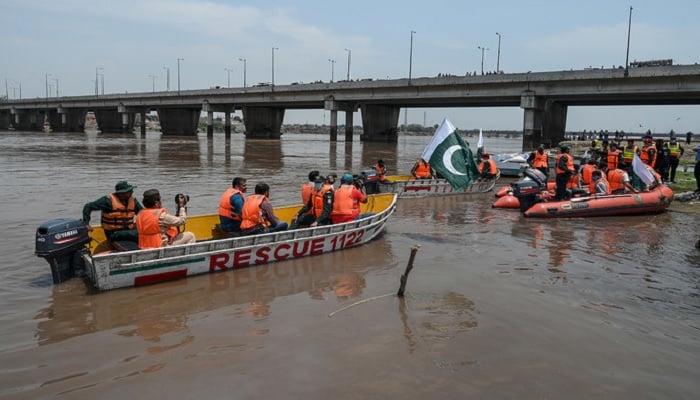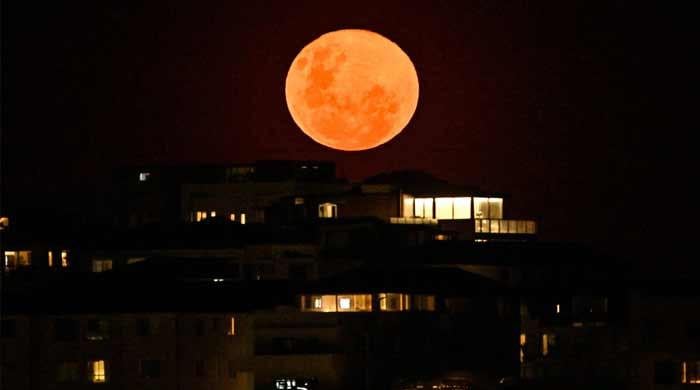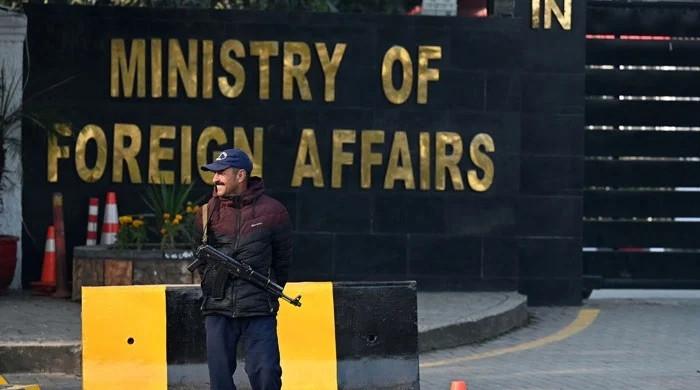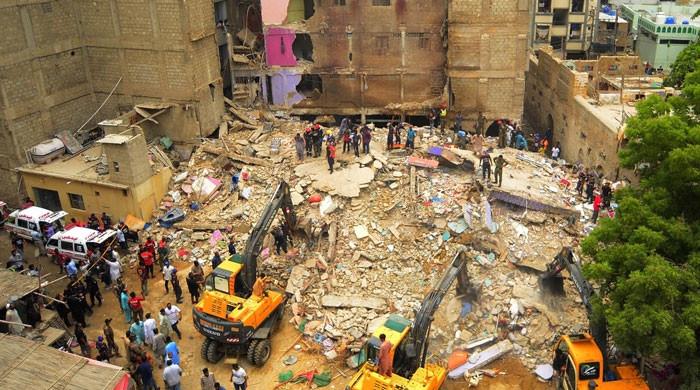NDMA sounds flood alert as India releases water into Ravi after Sutlej warning
Flood levels at Ganda Singh Wala in Kasur have surged, keeping Sutlej situation highly alarming
August 26, 2025

- NDMA warns of heavy rains in India, swelling rivers into Pakistan.
- Thein Dam near capacity; Aik, Deg, Bein, Basantar, Palkhu at risk.
- Chenab at Marala may hit 200,000 cusecs; Sutlej at Kasur 220,000.
The National Disaster Management Authority (NDMA) has issued an alert for potential flooding in the Ravi after rising inflows from India’s Madhopur Headworks, a day after New Delhi warned Islamabad of planned releases into the Sutlej and Chenab that have already inundated parts of Pakistan.
New Delhi on Monday made a second contact with Pakistan in two days to warn Islamabad about a potential flood in the Sutlej River, after issuing a previous warning about the Tawi River at Jammu, diplomatic sources told Geo News.
The Tawi is a river that flows through the Jammu region in the Indian-Illegally Occupied Jammu and Kashmir (IIOJK) and Sialkot District of Punjab, Pakistan. The Tawi is a major left bank tributary of the Chenab.
It marked India’s first major diplomatic contact with Pakistan since the May military stand-off, which followed New Delhi’s attempt to pin the Pahalgam terror attack in IIOJK on Islamabad and its decision to suspend the Indus Waters Treaty (IWT).
The NDMA, in its advisory, said that heavy rainfall was forecast across Indian states, including Himachal Pradesh and Uttarakhand, which could swell rivers and streams flowing towards Pakistan.
The authority’s National Emergency Operations Centre is monitoring the situation around the clock, per the notification.
According to the forecasts, the Ravi River at Jastar is expected to experience high flood levels within the next 48 hours, with flows ranging between 80,000 and 125,000 cusecs.
In the Chenab’s upper catchment, water levels in the Jammu Tawi and Munawar Tawi streams are expected to rise, while at Marala, the Chenab’s discharge could climb to between 150,000 and 200,000 cusecs.
The situation at the Sutlej remains alarming. At Ganda Singh Wala in Kasur, officials warned the river’s flow could rise to 220,000 cusecs.
On Monday, the Flood Forecasting Division (FFD) confirmed it was already in very high flood there, with discharge reaching 188,810 cusecs.
The NDMA also noted that India’s Thein (Ranjit Sagar) Dam is close to reaching its storage capacity, increasing the risk of further releases. Smaller streams and nullahs — including Aik, Deg, Bein, Basantar and Palkhu — are also expected to carry higher flows.
The FFD also reported a medium flood at Head Sulemanki and at Jassar on the Ravi, where water flow has surged to 82,140 cusecs.
At Kotri Barrage on the Indus, a low flood is underway with inflow recorded at 217,490 cusecs, while Sukkur Barrage continues to face a medium flood.
Low flood has also been reported at Tarbela, Kalabagh, Chashma and Guddu, according to officials.
Prime Minister Shehbaz Sharif has directed the NDMA to hold daily monsoon review meetings. The authority said it is providing support to provincial and local departments to strengthen preparations and relief efforts.
The Foreign Office, in a statement on Monday, reaffirmed that India was obligated to fully comply with all provisions of the treaty.
It said India's unilateral declaration to hold the IWT in abeyance constitutes a serious violation of international law and could have significant negative consequences for peace and stability in South Asia.
Following the latest alert, authorities issued warnings based on the information provided by India, the sources confirmed.
New Delhi accuses Islamabad of orchestrating the deadly militant attack, an allegation that Pakistan denies.
Based on these groundless allegations, India waged a war against Pakistan in May, resulting in the heaviest military engagement in decades, before a ceasefire was brokered by the US.
The water treaty had survived three wars and other conflicts between the two rivals, while withstanding many twists and turns in diplomatic ties.
Reuters reported on May 16 that Delhi is considering projects that would likely reduce the flow of water into Pakistan from rivers allocated to that country.
India has also said that it will "keep the treaty in abeyance until Pakistan credibly and irrevocably abjures its support for cross-border terrorism."
In contrast, Islamabad says "any attempt to stop or divert the flow of water belonging to Pakistan" will be an "act of war".









